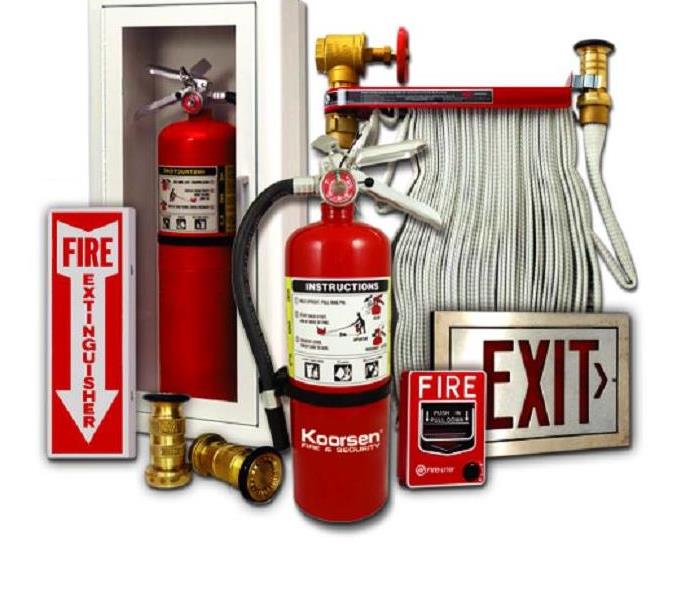Fire Safety Equipment: Five Pieces You Need for Your Home
3/30/2021 (Permalink)
Our homes may be our sanctuaries, but they also present multiple opportunities for fire danger. An unattended stovetop can result in a kitchen fire, while electrical systems and appliances can overheat. Fireplaces, candles, flammable liquids, and outdoor grills — to name just a few — all add to the risk.
Having the correct fire safety equipment in your house is essential to keep your family safe and your home protected. This article highlights the five most important pieces of equipment needed to safeguard your home and loved ones. The peace of mind that comes from knowing you’re prepared is worth the time, effort, and expense involved.
- Smoke Alarms
This is your first line of defense. According to the Red Cross, the National Fire Alarm Code (NFPA 72) requires all new homes to have inter-connected hard-wired smoke alarms with battery backup. If you don’t have an interconnected system, battery-powered alarms are easily installed. Both types of alarms need to be located on every level of the home with one inside each bedroom.
4 important rules for smoke alarms:
- Never disable them – even if they go off when they shouldn’t.
- Check them once a month using the test feature.
- Replace the batteries at least once a year.
- Replace the alarm every 10 years as older alarms may not perform properly
- Fire Extinguishers
Since most home fires start in the kitchen, you’ll want to put a fire extinguisher in there, at a minimum. But it’s recommended to place them in multiple locations around the house. Since extinguishers from various makers all work differently, it’s a good idea for the adults in the household to get training from the local fire department. Extinguishers should be installed near exits, away from heat sources, and up high enough that kids can’t reach them.
- Sprinkler Systems
While a smoke alarm will detect smoke, an automatic sprinkler system gives you a way of dealing with flames immediately. While you’re waiting on the fire department to arrive, sprinklers can help slow a fire’s progress or can even douse it completely. Moreover, a sprinkler system can prevent deadly gases and smoke from affecting your family and could also extinguish a fire that breaks out while you’re away from home.
- Carbon Monoxide Alarms
There’s a good reason carbon monoxide (CO) is called the “silent killer.” This deadly gas is invisible, odorless, and colorless and even a small amount can be fatal if inhaled for long enough. Install carbon monoxide alarms on each level of your home and outside bedrooms. If the alarm emits its high-pitched warning, get outside as quickly as possible or open windows and doors and take deep breaths of fresh air. CO poisoning can cause headaches, nausea, and tiredness and can be mistaken for flu.
- Fire Escape Ladders
If your home has more than one floor, collapsible fire ladders should be a part of your fire-safety arsenal. Place a ladder where it’s easy to access in every upper-level room in case your evacuation route gets cut off by smoke or fire. Then, have the entire family rehearse the steps they would take to get the ladders out and attached to open windows.
No one wants to dwell on the possibility of their family being in danger or their home being consumed by flames, but this is one situation where being properly prepared could save lives and property. If you haven’t already done so, make an escape plan and go over it with your family. And check your homeowner’s insurance to make sure your policy is up to date with adequate coverage.






 24/7 Emergency Service
24/7 Emergency Service
